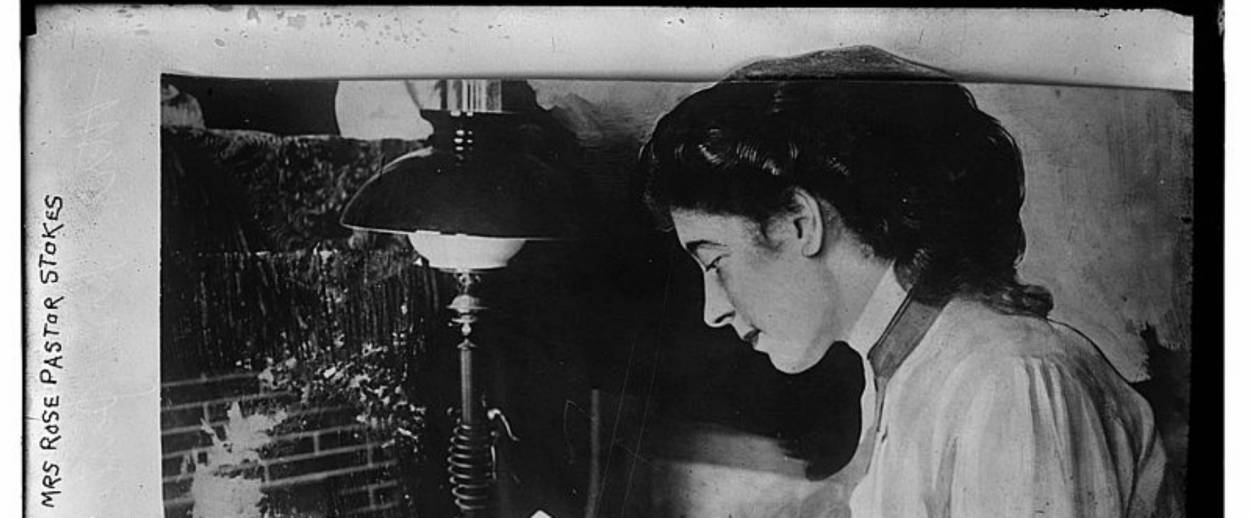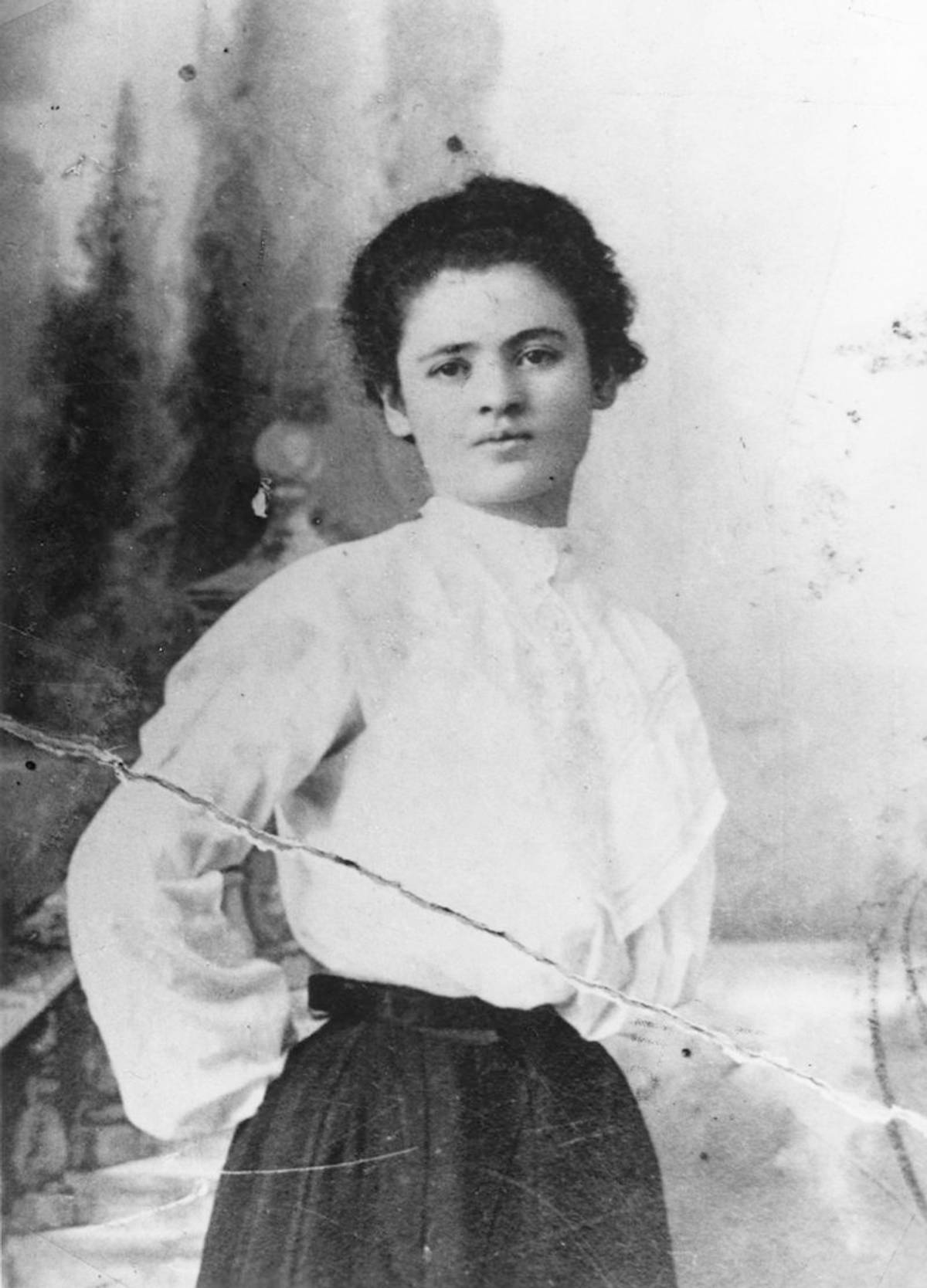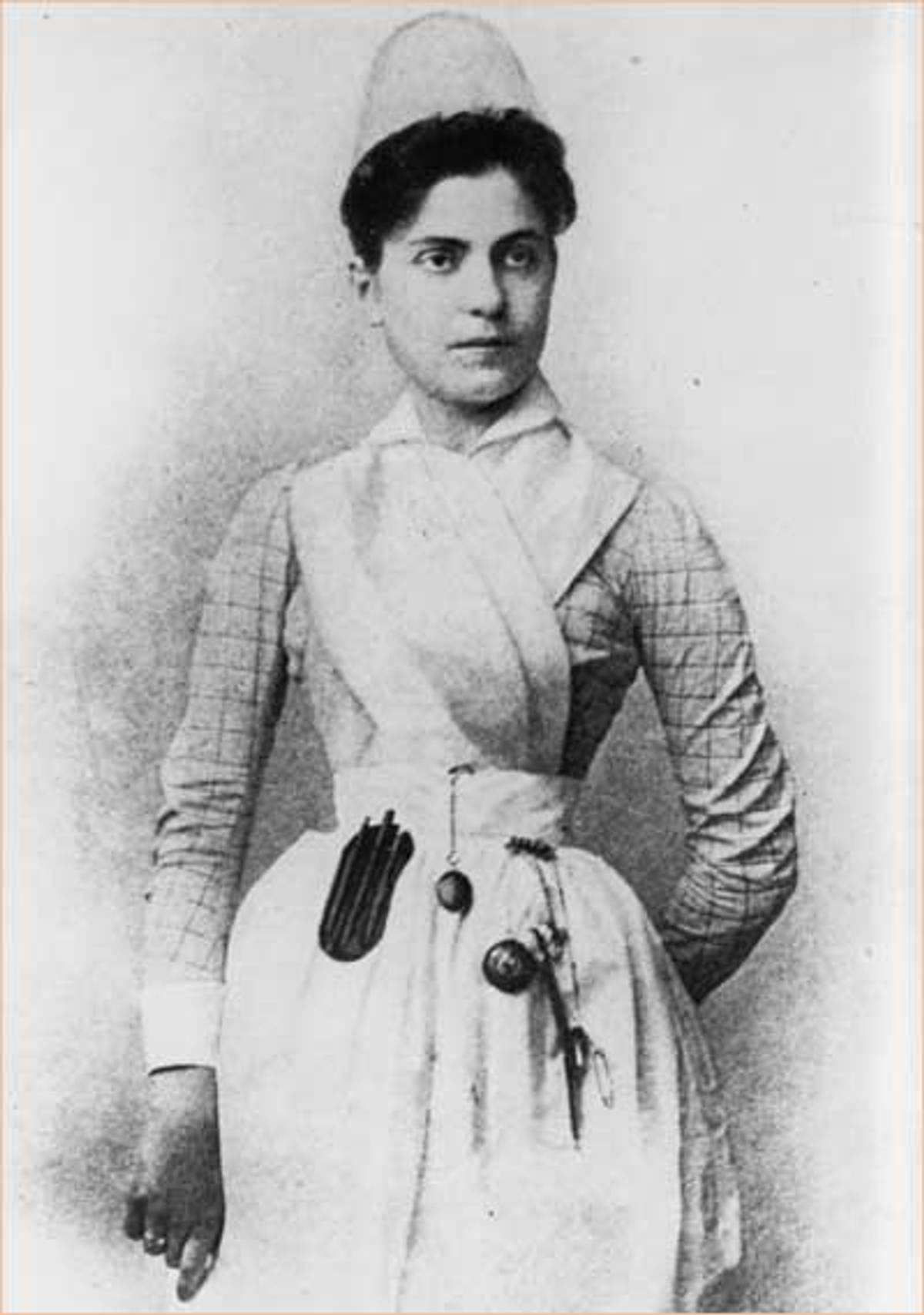The ‘Fiery’ Historic Heroines of New York’s Lower East Side
A recent panel at the Sixth Street Community Center highlighted the lives of four activist Jewish women, who have inspired me to stand behind my support for Hillary Clinton




A colleague recently came at me hard about my support for Hillary Clinton (after a long period of candidate-related waffling, I’ve made up my mind), and I was totally unable to respond. I stammered, flinched, and finally just crumpled. Dissolved. Like a wet square of discount toilet paper. I felt shameful.
If only I could have emulated some of the women who lived in the East Village—my neighborhood—a hundred years ago, who were better orators than I will ever be: Lillian Wald, Emma Goldman, Rose Pastor Stokes, and Clara Lemlich. They fought relentlessly for women’s rights and a more just world. They are awesome, and we should talk about them in this election season so clouded with prejudice, hatred of immigrants, sexism, and bias. They would have given me a stern, instructional talking-to about my inert defense of Hillary to my aggressive colleague.
These historic heroines are on my mind because my pal Julia and I recently went to the Sixth Street Community Center for a program called “Fiery Ladies: Radical Women of the Jewish Lower East Side,” sponsored by the Lower East Side Jewish Conservancy and the Greenwich Village Society of Historic Preservation. The community center, painted in bright hippie colors both outside and in, once housed a shul called Ahawath Yeshurun. It served Jews who’d emigrated from the Austro-Hungarian town of Munkatsch, now part of Ukraine. Later, it became the center of the community garden movement in the East Village and Lower East Side. Now it houses a variety of community events, an organic café, a Community Supported Agriculture (CSA) outpost and a yoga center.
In the lobby, painted on a mostly-blank slab of marble with a few sad, abandoned yahrzeit names at the top, is a bold black and white mural of activist Emma Goldman, looking fierce, holding a red firecracker. Printed on her dress is the following:
Spoke wrote and conspired. Opposed the state, religion and capitalism. She fought for the right to abortion and the 8-hour day worked as a seamstress and midwife, loved dancing and theater had many lovers.
(Many lovers!) Next to her, in a more softly and delicately colored mural, labor activist Clara Lemlich sits at a vintage sewing machine on a wooden table, with author Zora Neale Hurston on her right and abolitionist Isaac T. Hopper on her left. (In real life they did not hang out, what with living in different time periods. ART.)
Julia and I heard a lot more about Goldman and Lemlich over the course of the evening, from panelists Elissa Sampson, Ph.D, an urban geographer and longtime Lower East Side resident; Joyce Mendelsohn, an educator, historian, preservation activist, tour guide, and author of The Lower East Side Remembered and Revisited; and Kate Pastor, a freelance writer and Adjunct Professor at CUNY Graduate School of Journalism, as well as the great-grand-niece of LES activist Rose Pastor Stokes.
Sampson, with a delightful sense of drama, dressed as Clara Lemlich, in a high-necked, ruffled-collared blouse (aka a shirtwaist), a big-brimmed black straw hat and a floor-length, high-waisted skirt. In a potent New York accent, she told us about Clara’s role in the 1909 Uprising of 20,000, the huge strike against the shirtwaist factories that galvanized the labor movement. At a rally at Cooper Union, the American Federation of Labor’s Samuel Gompers urged caution and deliberation, but diminutive Clara, then only 23 years old, got up and bellowed: “I have no further patience for talk! I am a working girl, one of those striking against intolerable conditions. I am tired of listening to speakers who talk in generalities. What we are here for is to decide whether or not to strike. I make a motion that we go out in a general strike!”

Lemlich was charismatic as hell (she’d already forced/charmed the male union leadership into working on behalf of women workers as well as men) and 20,000 of 32,000 members of the garment industry walked out. The 13-week strike was brutal, with thugs hired by the factory owners beating up the protesters, but eventually almost every sweatshop agreed to a union contract. The Triangle Factory was not among them. Clara lost a cousin to the famous fire on March 25, 1911.
Lemlich was repeatedly thrown in jail, roughed up by cops and gangsters, and disrespected by purportedly liberal activist dudes. Her family was not entirely supportive of her secularism, love of literature, determination to be independent, and fight for women’s rights. (I’ll again recommend that you pick up the wonderful children’s picture book Brave Girl, which tells Lemich’s story in lyrical kid-friendly language and lively mixed-media art.)
Lemlich lived to be 96. Sampson noted, “I was just listening to tapes of her from the 1970s. She was still very feisty! She was organizing the workers in her nursing home, much to the chagrin of her family.” (She also convinced the home’s management to stop buying grapes, in support of Cesar Chavez’s United Farm Workers boycott.)
Another badass LES babe was Lillian Wald, a feminist and social reformer who founded the Henry Street Settlement—still an important social and cultural force in my neighborhood today—and the Visiting Nurse Service. “She was more German than Jewish,” Joyce Mendelsohn, the LES historian, noted. “She was affluent but restless.”
Wald grew up wealthy in Rochester, New York, the site of the nascent women’s liberation movement and the matriarchal society of the Seneca Mothers of the Haudenosaunee. She decided to study nursing, because, as Mendelsohn put it, “Nursing meant power. Nursing meant female power. It meant being not just a healer, but a person who could run institutions.”
She came to the Lower East Side to teach homemaking skills at a site set up by the wealthy ladies of the uptown Temple Emanu-El. But, as the story goes, a kid came running into her class and begged her to come help his mother, who was hemorrhaging, perhaps from a self-administered illegal abortion. Wald found seven people, including two boarders, living in two rooms. She stabilized the bleeding, scrubbed the floors, shopped for food for the family. When the woman she’d saved, Mrs. Lipsky, kissed her hand, Wald knew she’d start a visiting nurse service. Rich Jews like the Schiffs, Loebs and Harburgs funded her projects, and Schiff bought her 265 Henry Street as a base of operations. “She realized it’s not enough to take care of a sick person,” Mendelsohn said. “You have to go back to the roots of where they live, how they work, how their lives would be improved by housing, education, labor—all kinds of solutions to their problems.”
Kate Stokes then discussed her relative, Rose Pastor Stokes. Born in Poland, Rose moved with her mother to the East End slums of London after her father abandoned the family. They then went to Cleveland; at 11, Rose began working in a cigar factory and stayed for the next 11 years. She loved to write, and began contributing to the Jewish Daily News in New York City. Ultimately she moved to New York for a job…and for love. “She had an affair with an editor,” said Kate Stokes, “Who turned out to be having affairs with everyone. Especially his fiancée.” But Rose rebounded, tutoring at the Educational Alliance and writing a column called “Dear Zelda” that told girls how to behave with men. She got an assignment to interview Graham Stokes, a rich goy from a prominent family who was active in social justice causes. They fell in love (scandal!) and got married. Along with her journalism, singing, playwriting, and painting, Rose fought for legal and accessible birth control and workers’ rights. “We should not be independent like millionaires, nor dependent like laborers,” she wrote. “My ideal is that we all be interdependent. And I’m not working in a losing cause.”

Finally, we learned about Emma Goldman, “The Most Dangerous Woman in America.” She was an anarchist, not a mere socialist or Communist. She fought for unions, birth control, and a wide variety of radical causes. The plaque in front of her home at 208 East 13th Street says it all: “Anarchist, orator, advocate of free speech and free love. Lived here from 1903-1913 and published the radical magazine Mother Earth. She was deported to the Soviet Union in 1919.” Goldman and her lover, Alexander Berkman, had planned to assassinate the industrialist/financier/robber baron Henry Clay Frick, but Berkman was a lousy shot and Frick survived. Goldman was sure she wouldn’t have missed. (“There are anarchists and there are anarchists!” said Sampson.)
Wald was much more guarded and careful than Goldman. She relied on the financial support of the 1-percenters of her day, the fancy uptown German Jews. “She walked a fine line,” Mendelsohn said. “She was never on a picket line, because she had to keep her supporters happy. But she could call FDR and get on a train and see him the next day in DC.” She wasn’t known for fighting for civil rights. But when the nascent NAACP, then called The Negro League, couldn’t find a restaurant in NYC where an interracial group could have dinner, Wald opened the settlement house to them and became a founding member of the organization. She was fearless about everything. While Wald worked within the system, Goldman wanted to rip it up and start again. One might even argue that Wald, with her industrialist ties and endless diplomacy, was the Hillary of her day; while Goldman, with her fiery desire to foment revolution, was that era’s Bernie.
We need activists of all sorts to change the world. And while we can’t all be as persuasive and expressive and bold as these women were, we can try. For my own part, I’ve gotta work harder to represent.
Previous: A Mother and Daughter Remember the Triangle Factory Fire
Related: A House Divided
Marjorie Ingall is a former columnist for Tablet, the author of Mamaleh Knows Best, and a frequent contributor to the New York Times Book Review.